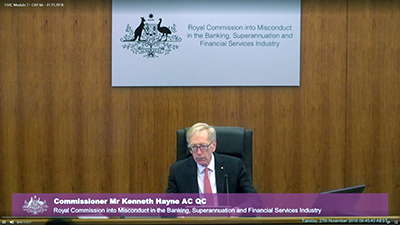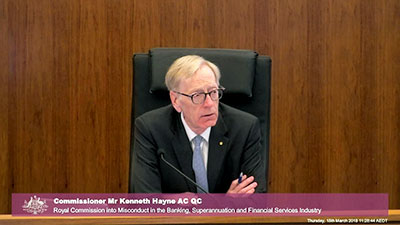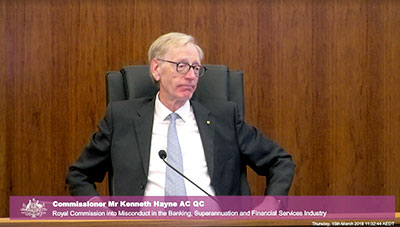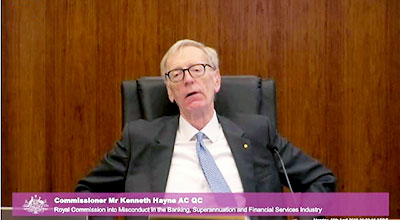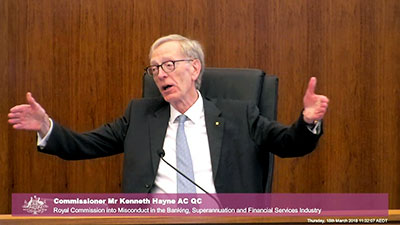Australia f-ed up
AS CLUMSY and debilitating as Facebook’s news feed ban has been – for thousands of businesses and community organisations – commentary so far is mostly missing the point. It's about The Money – specifically the amount of money being transfer-priced out of the Australian advertising economy by the Big Tech platforms.
The point should not be about Facebook, Google and other platforms’ reluctance to agree to pay for news content (especially as they can certainly afford it). The point is that the digital advertising market in Australia is not a fair and level playing field – for Australian companies.
The sticking point is that these multi-national tech giants are ‘transfer pricing’ billions each year out of the Australia economy – never to be seen again. While they pay a substantial amount of tax, at the same rates as Australian companies, it is not assessed on the genuine profits made out of the Australian market. Nope, only on what is deemed to be taxable in Australia.
The vast majority of earnings are ‘transfer-priced’ to another jurisdiction where the Big Techs access far lower tax regimes. This is money sucked out of the Australian advertising arena, forever. In fact, out of Australia, forever.
That is the real problem for Australia – and not simply for the Australian media landscape.
It is not just the tech giants doing this, although they are having the most obvious negative impacts on the publishing sector – and it’s debilitating their own digital media community here, whether they like to admit it or not.
Here’s how it works
Let’s use Google as an example, as they are close to three times the economic size of Facebook in Australia.
Google last year reportedly had an income of about $4.8 billion in Australia, mostly drawn from advertising. Its Australian operation, however, only recorded $1.24 billion in earnings – basically a sales agency fee of about 25 percent.
The rest ($3.56 billion) went offshore. The advertising is probably billed out of Singapore and tax on that income is paid there, where Google and certain other tech giants have a ‘cuzzy’ low tax deal with the government.
That $3.56 billion, earned out of the Australian advertising economy, is gone forever to the Australian people.
If Australian media companies had earned that advertising revenue, it would be taxed by the Australian Government at 30 percent of profits. That money would also circulate and then recirculate through the Australian economy as a normal part of the publishing production cycle.
If profit was only 10 percent of that $4.8 billion, in Australia (and surely it’s more than that, given the very nature of these platforms; after all, the cost of sales is taken care of in Australia), it would be $480 million to be taxed. That’s about $144 million in profits tax. (But in such a case, the other 90 percent would have been spent in Australia anyway, get the picture?)
Yes, Google paid over $108 million in tax last year, but that included a $50.6 million agreed amount with the ATO to cover ‘under-taxation’ from previous years.
According to a Sydney Morning Herald report last year, this was the result of the Federal Government’s Multinational Anti-Avoidance Legislation (MAAL), which came into effect on January 1, 2016, and the Diverted Profits Tax (DPT), which came into effect on July 1, 2017. From the introduction of these two pieces of legislation, tax bills have risen steadily for the multi-national digital platforms.
So, on those numbers, and with profit only estimated at (say) 10 percent of income, right now Google is paying less than a third of what an Australian media organisation would be expected to pay.
Not a bad Visitor’s advantage.
Facebook earned nearly $674 million from local advertisers in the last financial year. It paid about $16.8 million in tax.
Facebook also uses a reselling and transfer-pricing structure – as do other multi-national entities such as Netflix, Spotify, Apple, Airbnb, Uber and even American Express – so that Facebook’s Australian revenue was booked at about $166 million, meaning the organisation could declare a local profit of $22.7 million … after that $16.8 million donation to the people of Australia.
The other $508 million has left the Australian economy … forever.
Transfer pricing ‘imbalance’
These examples demonstrate why the Australian Government loves the Big Four Australian banks.
In recent years Australia has come to expect around $10 billion a year in profits taxes from the Big Four banks. On the banks’ numbers – bringing in a combined and ‘disappointing’ $17.4 billion in FY2020 profits across a difficult year (usually it is well into the mid-$20 billions) – four Googles would have earned about the same amount of revenue and paid just $230 million (or $400 million if you include the one-off $50.6 million back-tax agreement with the ATO as well).
Bit of a difference. On similar revenue, the Big Four banks paid $7.4 billion in tax while four Googles would have paid just the $0.4 billion.
Consider how much of a comparative advantage this structure gives the Big Tech platforms over local media, who cannot transfer-price, and you begin to understand the market cancer these magic wand transfer pricing arrangements present. It’s not really fair to pick on Google and Facebook alone over this as there are plenty of other multi-national companies doing it – especially in the resources and financial services sectors.
That’s why the Australian Government did not like BHP trying to emulate the multi-national techs by setting up a ‘marketing office’ in Singapore several years ago, in order to buy resources from offshore, pay reduced tax on that in Singapore, and then sell it on to places like Japan. BHP felt the pressure and ‘did the right thing’ pretty smartly. Well, after losing the High Court case.
Tip over the rotten apple cart?
But the Big Techs have a profit generating global apple cart that they are very reluctant to see tipped over.
Google has done the sums and within its model it can afford to cut some multi-million dollar deals with Australian media companies, keep its reputation intact and still make a motza.
It will assist the Australian situation and keep its reputational presence intact in this market. Yes, even though it earlier threatened to pull certain services out of Australia too.
Facebook earns much less than half what Google does in Australia, so perhaps it has less wriggle room.
But the reaction to ‘turning off the news’ is now likely to see Facebook squirm. Recent moves to strike deals with Australian media companies seems to verify that.
This misstep probably won’t have much of an effect on them financially overall, even if the Australian market retreats from Facebook.
But accounting for reputational damage is never a precise ledger.
Sometimes, to save face, book profit doesn’t count. Especially when the books are kept in separate countries.
 ends
ends

 How to resolve AdBlock issue?
How to resolve AdBlock issue? 